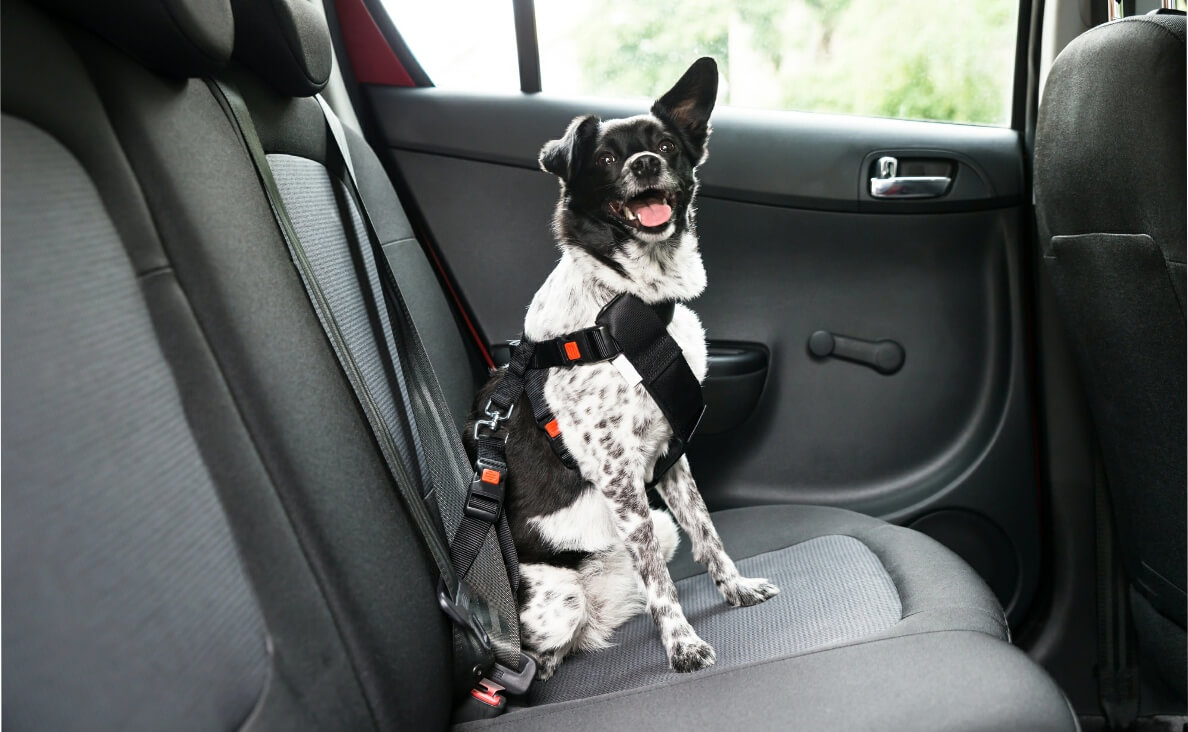
Ensuring your dog’s safety while traveling is crucial. Unfortunately, many pet owners overlook this aspect, leading to potential dangers for both the dog and the driver. In this blog post, we’ll explore the importance of selecting the right car restraint for your dog, providing insights to help you make an informed decision.
Related: 13 Tips for an Enjoyable Road Trip With Your Dog
Understanding the Importance of Car Restraints for Dogs
Safety for Your Dog
Car restraints for dogs are essential for safeguarding your pet during car rides. Without a proper car restraint for your dog, a sudden stop or accident can result in severe injury. Additionally, unrestrained dogs can easily distract the driver, increasing the risk of accidents. Using a car restraint for your dog is a simple step that can prevent these dangers.
Legal Requirements
Depending on where you live, there may be specific legal requirements for securing pets in vehicles. In some regions, it’s mandatory to use a car restraint for your dog to ensure their safety and that of others on the road. Familiarize yourself with local laws to avoid penalties and ensure compliance.
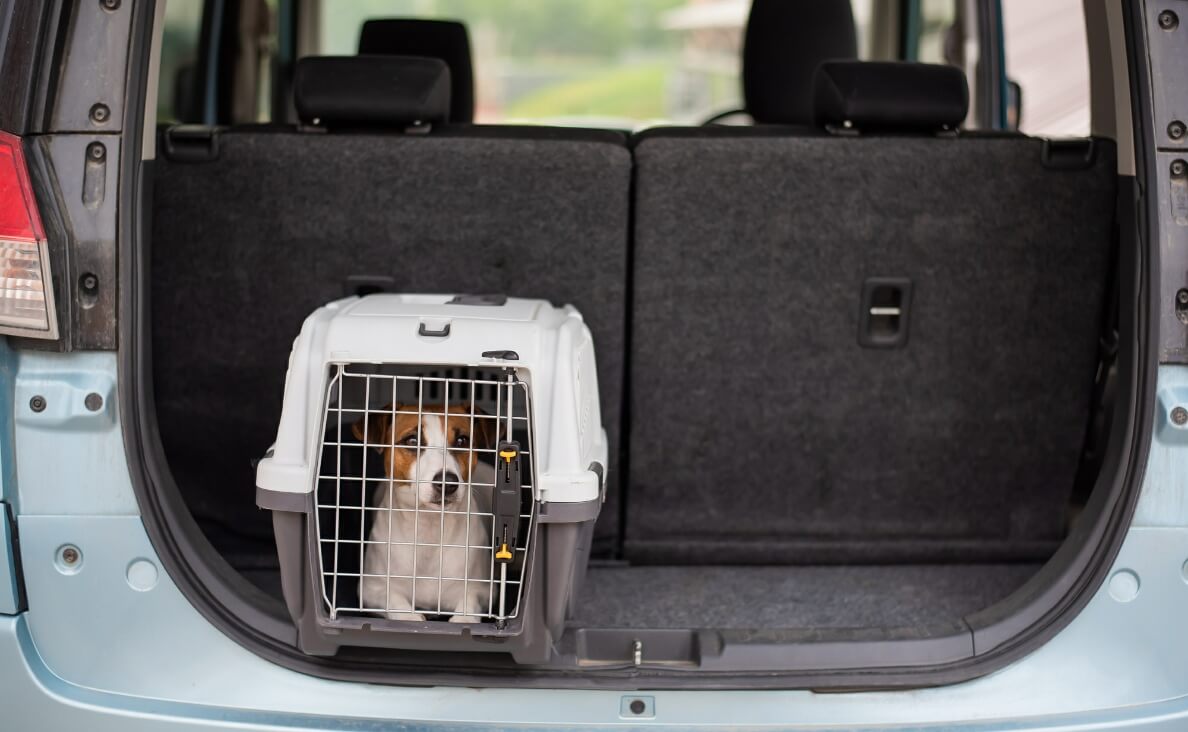
Types of Car Restraints Available
Dog Seat Belts
Dog seat belts are a popular choice for many pet owners. These restraints attach to your car’s seatbelt system, providing a secure and comfortable fit for your dog. While dog seat belts are convenient, they may not suit all dogs. It’s essential to ensure a snug fit to prevent escape.
Dog Car Harnesses
Dog car harnesses are designed to distribute the force of a sudden stop across your dog’s chest, reducing the risk of injury. These harnesses are generally more secure than seat belts and can be used with most vehicle seatbelt systems. However, some dogs may find them restrictive, so it’s important to choose the right size and style.
Crates and Carriers
Crates and carriers offer an enclosed space for your dog, preventing them from moving around the car. These are especially useful for smaller dogs or those prone to anxiety. Ensure the crate or carrier is securely fastened in your vehicle to prevent it from shifting during travel.
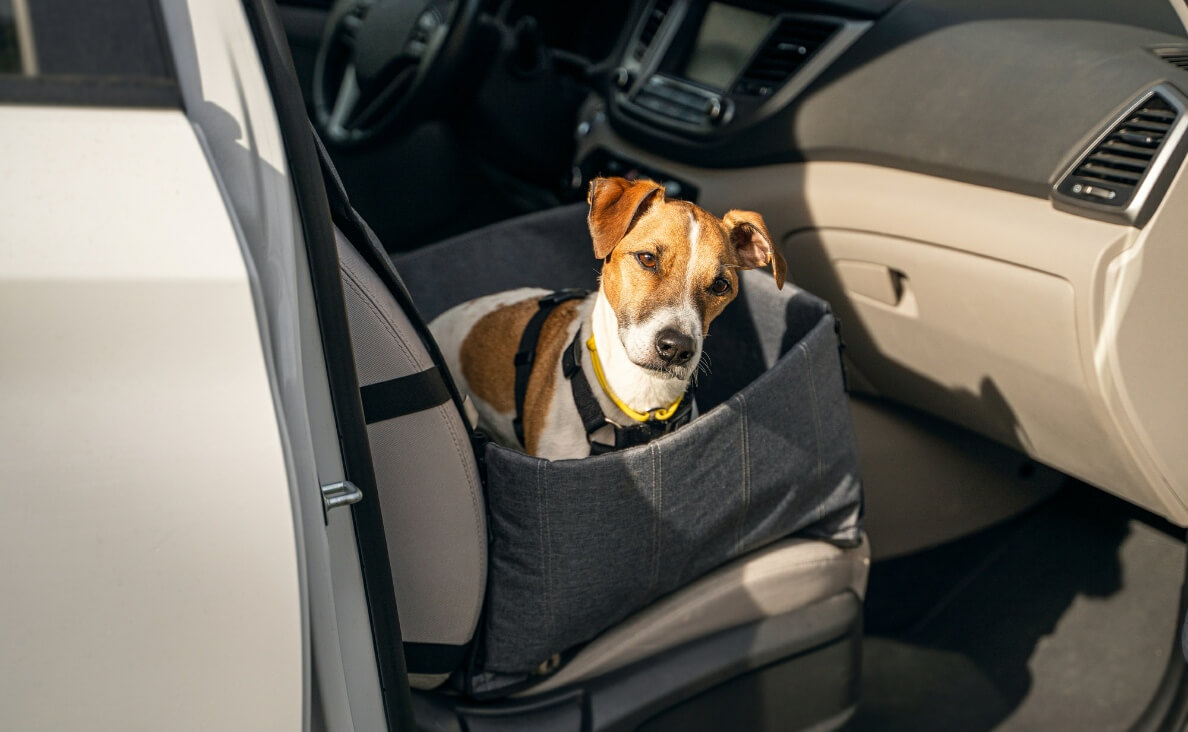
Dog Car Seats
Dog car seats elevate smaller dogs, allowing them to see out of the window while keeping them secure. These seats often come with built-in harnesses and can be attached to the car’s seatbelt system. Dog car seats are ideal for pets who enjoy looking outside and staying comfortable.
Factors to Consider When Choosing a Car Restraint
Size and Weight of Your Dog
The size and weight of your dog play a crucial role in selecting the appropriate car restraint. A car restraint for your dog must fit them correctly to provide maximum safety. Ensure the restraint is designed for your dog’s specific size and weight.
Car Size and Layout
The layout and size of your car can influence the type of car restraint for your dog. Larger vehicles may accommodate crates or carriers more easily, while smaller cars might be better suited for seat belts or harnesses. Consider your vehicle’s configuration when making your choice.
Dog’s Behavior and Comfort
Your dog’s behavior and comfort are essential factors to consider. Some dogs may prefer the freedom of a harness, while others might feel more secure in a crate. Choose a car restraint for your dog that aligns with their temperament and comfort preferences.
Safety Ratings and Standards
When selecting a car restraint for your dog, always check for safety ratings and certifications. Restraints that meet established safety standards offer greater peace of mind, ensuring your dog’s protection in the event of an accident. Look for products tested by reputable organizations.
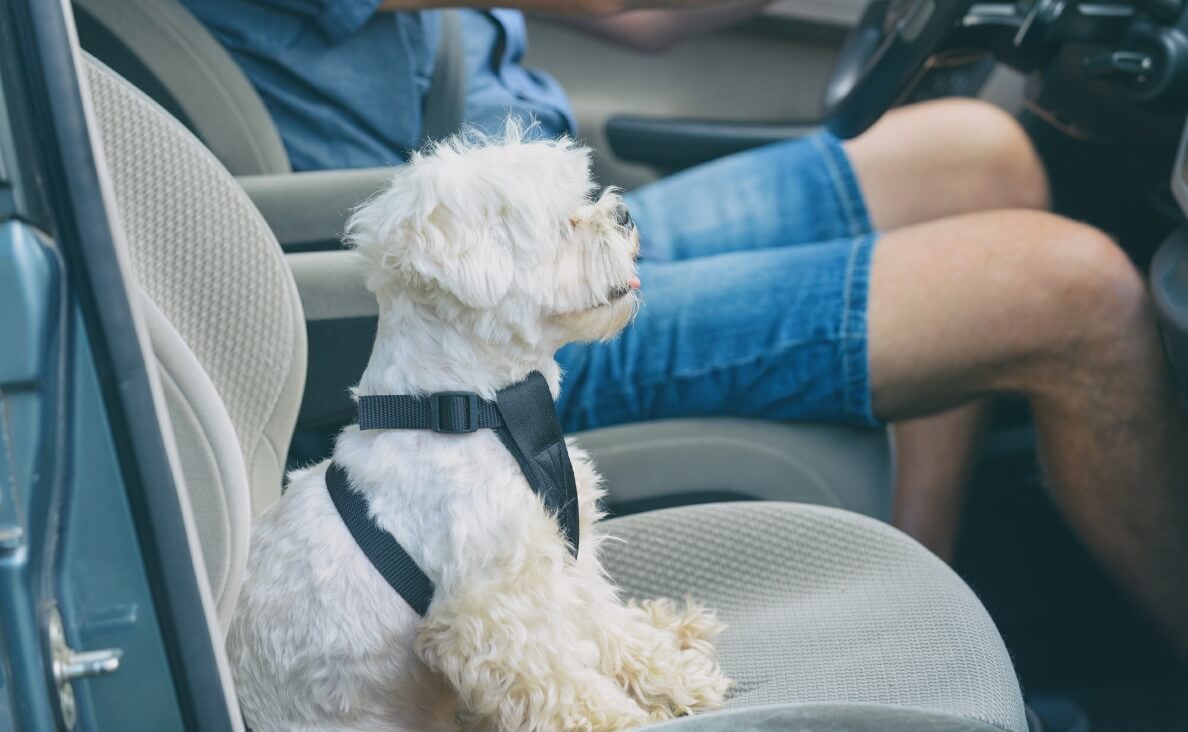
How to Properly Install and Use Car Restraints
Step-by-Step Guide for Each Type of Restraint
Proper installation of a car restraint for your dog is crucial. For seat belts and harnesses, follow the manufacturer’s instructions to ensure a secure fit. When using crates or carriers, fasten them to the car’s seatbelt or anchor points. Regularly check the restraint to ensure it remains secure.
Common Mistakes to Avoid
Avoid common mistakes such as using an ill-fitting restraint or failing to secure it properly. An improperly installed car restraint for your dog can be as dangerous as not using one at all. Double-check all connections and fittings before each trip to ensure your dog’s safety.
Maintenance and Regular Checks
Routine Checks
Perform routine checks on your car restraint for your dog to ensure it remains in good condition. Look for signs of wear and tear, such as frayed straps or broken buckles. Regular inspections help maintain the restraint’s effectiveness and prolong its lifespan.
Cleaning and Care
Keeping your car restraint for your dog clean and well-maintained is essential for hygiene and safety. Follow the manufacturer’s cleaning instructions to remove dirt and debris. Regular cleaning prevents the buildup of bacteria and keeps the restraint comfortable for your dog.
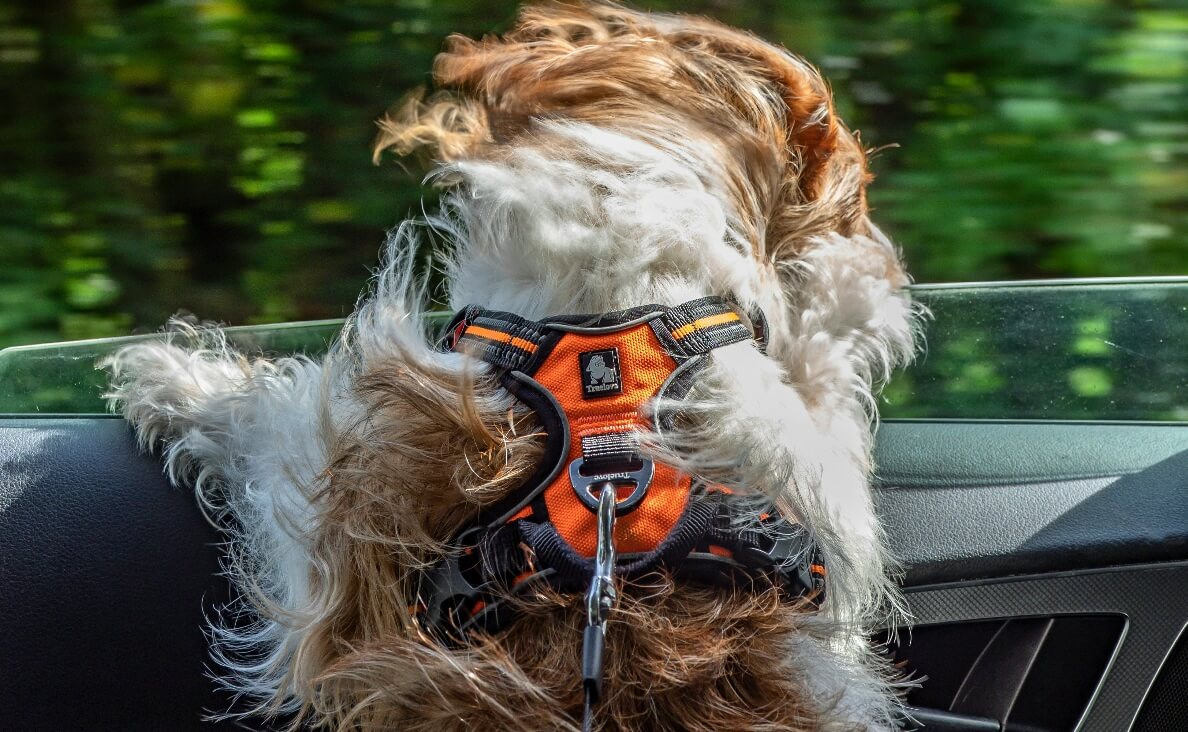
Conclusion
Choosing the right car restraint for your dog is a vital step in ensuring their safety on the road. By considering factors such as size, behavior, and safety standards, you can make an informed decision. Take the necessary steps to protect your furry friend and enjoy worry-free travels together.
FAQs
Can I use a regular seatbelt for my dog?
No, a regular seatbelt is not designed for the unique needs of dogs. Using a car restraint specifically for dogs to distribute force appropriately and prevent injury is essential.
How do I train my dog to use a car restraint?
Start by introducing the restraint gradually. Allow your dog to sniff and explore it outside the car. Use treats and positive reinforcement to make the experience enjoyable. Gradually increase your dog’s restraint time during short trips before attempting longer journeys.
What if my dog doesn’t like the restraint?
It’s common for dogs to take some time to adjust. Patience and positive reinforcement are key. If your dog is particularly resistant, try a different type of restraint. Consulting with a professional trainer might also help ease the transition.
Are there specific restraints for puppies?
Yes, there are restraints specifically designed for puppies. Ensure the restraint is adjustable and offers a secure fit as your puppy grows. Always prioritize a restraint that provides both comfort and safety for your young dog.
Can I use a car restraint for multiple dogs?
While it’s possible, it’s generally safer to use individual restraints for each dog. This prevents them from becoming tangled and ensures each dog is adequately protected. If you must use one restraint, ensure it’s designed for multiple dogs and meets all safety standards.
By following this comprehensive guide, you can choose the best car restraint for your dog, ensuring their safety and comfort on every journey.
What type of car restraint have you found works best for your dog? Please comment below…

 8 Best Heated Dog Beds for Cold Weather
8 Best Heated Dog Beds for Cold Weather 15 Custom Dog Portrait Gifts You Need to Order Soon to Have in Time for Christmas
15 Custom Dog Portrait Gifts You Need to Order Soon to Have in Time for Christmas How to Choose a No-Pull Harness for Your Dog
How to Choose a No-Pull Harness for Your Dog Top 8 Dog Technology Trends Totally Worth Your Money
Top 8 Dog Technology Trends Totally Worth Your Money 11 Holiday Collars for a Festive Season with Your Dog
11 Holiday Collars for a Festive Season with Your Dog






Seatbelts should NOT be attached to a dogs collar like this picture is showing. If you are involved in an accident or have to slam on your brakes, you are going to snap that dogs neck. It should be attached to a harness.
Thank you for pointing this out. I’ll change the picture. Good catch!